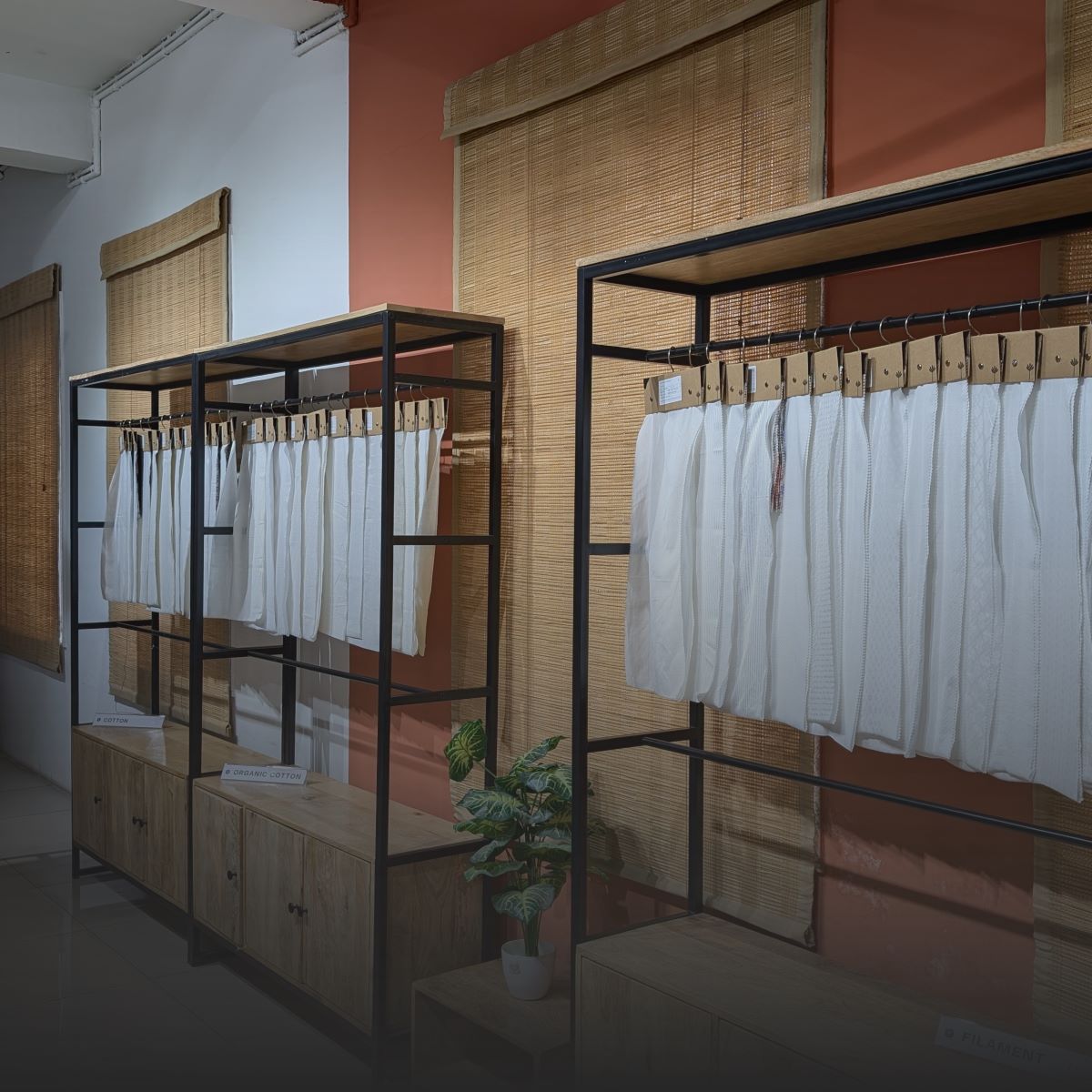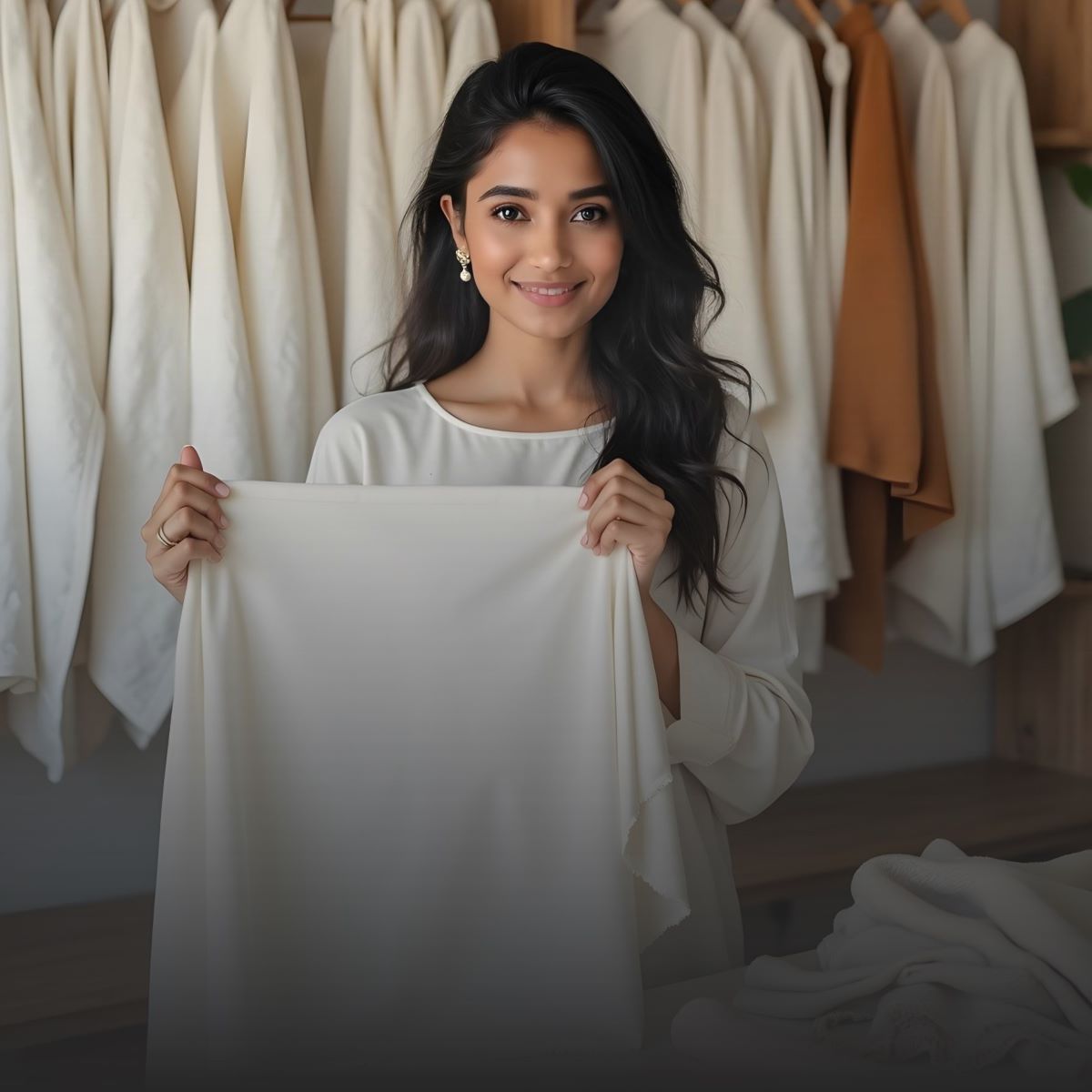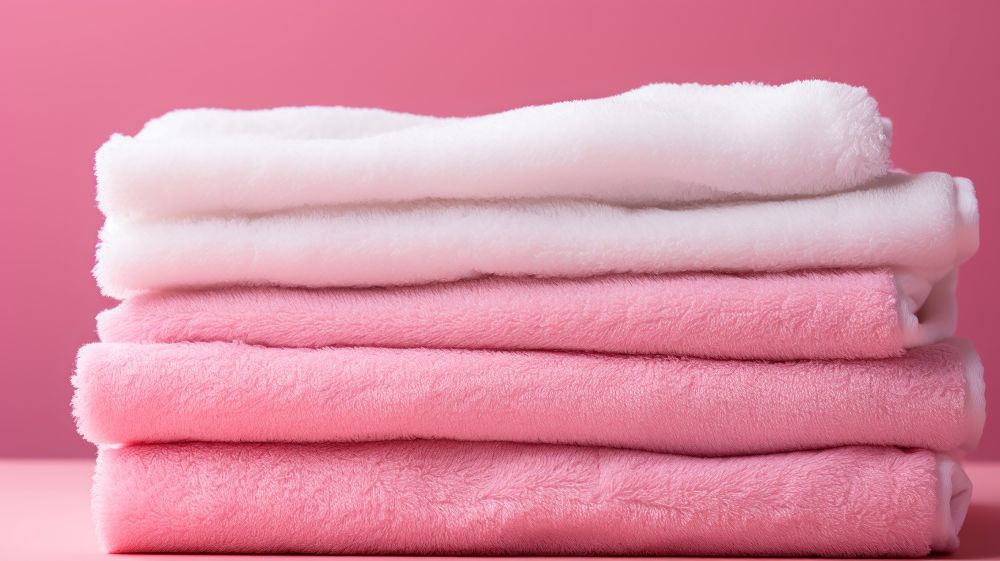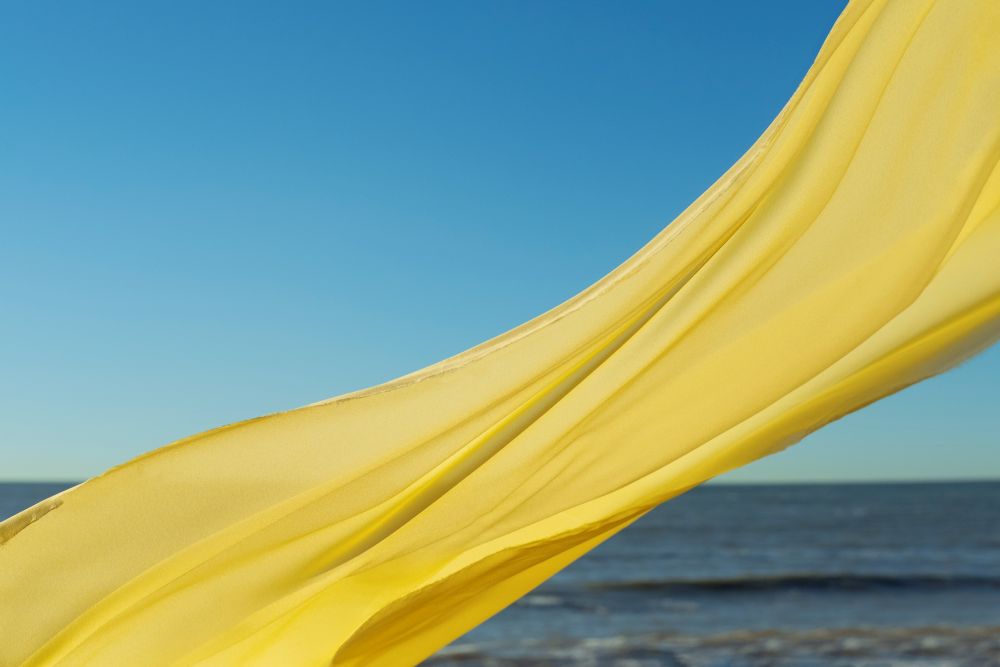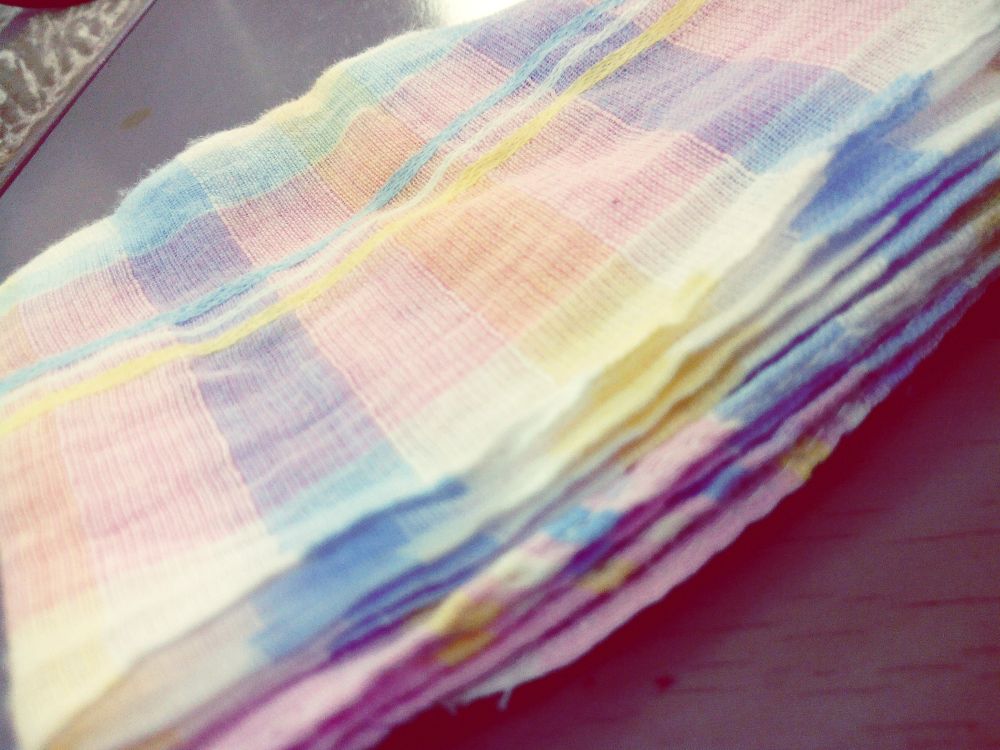Every great clothing brand starts with one important thing: the right cotton fabric. The GSM (grams per square metre) of your cotton fabric tells you how it looks, feels, and works, whether you're making high-end shirts, long-lasting outfits, or soft summer dresses.
You can use this advice to help you find the right cotton fabrics in different GSM qualities for your clothing line if you are a fashion designer, apparel manufacturer, or textile buyer.
What does GSM stand for? How do I choose the right fabric weight for each type of clothing? Where can I find certified, customisable cotton fabrics with low MOQs, custom dyeing, and 15-day delivery?
What Does GSM Mean in Cotton Fabrics?
GSM stands for grammes per square metre, which is a way to measure how heavy one square metre of cloth is.
To put it simply, GSM tells you the fabric's density and thickness:
- Lower GSM (30–80) → lighter, airier, perfect for summer shirts or linings.
- Medium GSM (90–180) → moderate weight for shirts, dresses, and uniforms.
- High GSM (200–520) → dense, durable fabrics used in trousers, jackets, upholstery, or tote bags.
GSM helps you choose cotton materials that are the right mix of comfort, drape, and durability for your product.
Why GSM Matters for Apparel Manufacturing
Knowing about GSM will help your clothes not be too thin or too thick, which is a common problem for new clothing brands.
- Affects power, breathability, and drape.
- Find out if it's right for different types of products.
- It helps keep things the same between production runs.
- Changes how colours soak up in printing and dying.
- Changes how much cloth costs per metre.

Cotton GSM Categories — Quick Reference Guide
|
GSM Range |
Weight Category |
Fabric Examples |
Best For |
|
35–80 GSM |
Lightweight |
Voile, Lawn, Muslin |
Linings, scarves, blouses |
|
90–150 GSM |
Medium Weight |
Poplin, Cambric, Sheeting |
Shirts, dresses, uniforms |
|
160–250 GSM |
Mid-Heavy |
Twill, Drill, Oxford |
Trousers, chinos, aprons |
|
260–350 GSM |
Heavy Weight |
Canvas, Duck |
Bags, outerwear |
|
400–520 GSM |
Extra Heavy |
Industrial Sheeting, Canvas |
Upholstery, home décor |
Pro Tip: Before approving bulk orders, always test GSM accuracy with swatches. This is especially important if you are printing or dyeing colours.
Why Cotton Remains the World's Favourite Fabric
Even though new synthetics are available, cotton fabric is still used to make most clothes around the world.
It is naturally soft, breathable, and adaptable so that it can be used in any season or environment.
Also Read: Cotton Poplin
Advantages of Cotton:
- Organic and biodegradable: Eco-friendly fabric that breaks down quickly.
- Comfortable and soft: Great for hot weather because it keeps the body cool.
- Long-lasting: Keeps its shape and structure after being washed several times.
- Dye- and print-friendly: This paper is great for reaction, pigment, or digital printing.
- Easy to take care of: Simple to clean, iron, and handle.
Cotton can feel as soft and silky as silk or rough and tough like denim, depending on the GSM. This means it can be used for everything from high-end fashion to industrial textiles.
Types of Cotton Fabrics by GSM and Weave
Because each weave has its own structure, cotton can be used in a lot of different types of products.
1. Cotton Voile (35–70 GSM)
A sheer, light cotton that is great for layering, linings, and shirts that let air flow through.
2. Cotton Poplin (100–130 GSM)
A smooth cotton that is tightly woven and great for suits, shirts, and dresses.
3. Cotton Cambric & Lawn (90–110 GSM)
Tops, dresses, and clothes for kids are all made of soft, fine-weave cotton.
4. Cotton Twill & Drill (180–260 GSM)
Diagonal weave gives strength and flexibility; perfect for pants, chinos, or jackets.
5. Cotton Canvas & Duck (300–520 GSM)
Heavy-duty fabric ideal for bags, upholstery, and outerwear.
6. Cotton Sheeting (60–180 GSM)
Balanced softness and structure — great for dresses, home decor, or workwear.
How to Source Cotton Fabrics in Different GSM Qualities — Step-by-Step
Getting cotton in the right way saves time, money, and mistakes during production, no matter how big or small your fashion company is.
This is a useful workflow that skilled designers and manufacturers use:
Step 1: Define Fabric Specifications
Before you contact suppliers, finalise:
- GSM range for each fabric
- Weave type — plain, twill, or poplin
- Colour tone or Pantone reference
- End-use — apparel, decor, or uniforms
- Finish preference — pre-washed, mercerised, or soft-flow
This makes it easier for your supplier to suggest the right base cloth.
Step 2: Request Fabric Swatches or Sample Yardage
Before placing a large order, you should always order swatches.
Look:
- GSM and weave accuracy
- Drape and texture
- Colour fastness after washing
- Shrinkage tolerance
👉 Pro Tip: To avoid production problems and make sure you get the right GSM match, always buy fabric swatches before bulk orders.
Step 3: Approve Shade and Finish
Based on your Pantone reference, ask for lab dips or sample dyed yardage.
Check the feel, finish, and regularity of the colours before giving the go-ahead for production.
Step 4: Confirm MOQ and Place Order
Low MOQ cotton fabrics starting at 100 metres per colour/design from fabric suppliers like Fabriclore are great for small runs, special collections, or one-of-a-kind items.
After the order is confirmed, it goes through the steps of weaving, dying, and finishing.
Step 5: Quality Checks & Delivery
Before dispatch, fabrics undergo:
- GSM verification
- Shrinkage and colour-fastness testing
- Surface inspection and roll packaging
Lead Time: 12–15 business days (including dyeing and finishing)
Delivery: Worldwide shipping via FedEx & DHL, fully trackable and safely packed rolls.

Where to Buy Cotton Fabrics in Different GSM Qualities
In today's digital supply chain, most professional designers prefer to buy cotton fabric online because it's easy, clear, and can be tracked.
If you're looking for cotton fabric wholesale in different GSM ranges, Fabriclore is a great place to get approved fabrics that can be made to fit your needs.
Why Fabriclore Is the Trusted Cotton Fabric Partner
- Extensive GSM Range: From ultra-light 35 GSM cotton voile to 520 GSM canvas and sheeting.
- 190+ Types of Fabrics: It has bases made of organic cotton, cambric, poplin, twill, drill, muslin, and denim.
- Access to low MOQ: You can start at just 100 meters per shade, which is great for small fashion brands and fashion startups.
- Custom printing and dying: Reactive screen printing, solid dyeing that matches Pantone, and environmentally friendly digital printing are all choices.
- Support for Swatch and Sampling: To try GSM and performance, you can order sample yardage or fabric swatches online.
- Finishing that lasts: Certified by OEKO-TEX® dyes and methods that don't use AZO.
- Quick Response: Fabrics that have been dyed will take 15 business days to arrive after they have been dyed.
- Shipping the World: We ship to over 20 countries and offer real-time tracking and packing that is safe for export.
👉 Explore now: Cotton Fabric Wholesale in Different GSM Qualities | Fabriclore
What Makes Fabriclore Ideal for Apparel and Home Brands
Brands can find a good mix between creativity and quality control when they work with a structured sourcing partner.
What's good for designers:
- Accuracy of Shades: For reorders, every Pantone match is kept track of online.
- Consistency in GSM: Every roll is checked and written down.
- Support that is devoted: Full help from the swatch to the shipment.
- Flexibility in customization: Change the GSM, finish, or feel for each item.
- Long-Term Care: Product made in an eco-friendly way.
- Speed: It only takes two to three weeks to sample, dye, and ship.
Big names and small businesses can both use this structure to get factory-level reliability with designer-level personalisation.
How Different GSM Fabrics Fit Various Product Lines
|
Product Type |
Recommended GSM |
Fabric Options |
|
Shirts & Blouses |
100–130 GSM |
Poplin, Cambric |
|
Dresses & Casualwear |
110–160 GSM |
Sheeting, Lawn |
|
Trousers & Bottoms |
180–250 GSM |
Twill, Drill |
|
Uniforms & Workwear |
160–220 GSM |
Poplin, Twill |
|
Bags & Accessories |
250–400 GSM |
Canvas, Duck |
|
Home Décor |
200–520 GSM |
Sheeting, Heavy Canvas |
By mixing GSM weights, you can use the same supplier environment for all of your clothing lines, from soft shirts to structured pants.
Quality Parameters to Check Before Bulk Purchase
Make sure of these important things before you finish your order:
- Composition of Fibers: Make sure it's 100% cotton or a mix of cotton that has been checked out.
- Accuracy of GSM: The clothing to how it will be used.
- Make it consistent: Threads that are all the same length and no broken ends.
- How Long Color Lasts: Try it out in both natural and artificial light.
- Loss of size: To find the % change, wash the samples first.
- Certification: OEKO-TEX® or GOTS preferred.
- Swatch Comparison: Check lab dips and production shade before dispatch.
Keep a fabric test record for every new GSM batch — it ensures reorder consistency.
Cotton Fabric Trends for 2025 and Beyond
As the textile industry moves towards more environmentally friendly designs, cotton fabric trends for 2025 focus on making fabrics that are comfortable, eco-friendly, and useful in many ways.
Key Trends:
- Organic & BCI Cotton: Transparent farm-to-fabric traceability.
- Custom Digital Printing: Sustainable, on-demand colouration.
- Mercerized and soft-washed finishes: Textures that are smoother and stronger.
- Blends of cotton, modal, and lyocell: Better function with a soft drape.
- The earthy neutrals are: Summer styles are mostly sand, olive, ivory, and taupe.
- Design in a circle: Reusing scraps and mixed GSM fabrics to make items.
By following these trends, you can keep your business up-to-date, responsible, and competitive around the world.
Common Sourcing Mistakes (and How to Avoid Them)
Even the best buying teams can run into these issues:
- Skipping Shades: Which leads to GSM errors.
- Not Doing Shrinkage Tests: Causes problems with the size after washing.
- Putting the cheapest option first: Might not be the same color or weave twice.
- Overlooking Lead Times: Delays collection schedules.
Solution: Always check swatches, make sure GSM reports are correct, and work with suppliers who are open and share data and QC reports.
Smart Cotton Sourcing Workflow Recap
Fashion and home decor brands can be sure of timely production, consistent quality, and smoother scaling with this repeatable process.
- Define fabric type, GSM, and finish.
- Order fabric swatches or lab dips.
- Approve colour, texture, and GSM results.
- Confirm MOQ (100m per colour/design).
- Production + QC testing.
- Receive global delivery within ~15 days.
Also Read: Cotton Kantha Fabric

Final Thoughts
The success of your clothing line depends on picking the right cotton fabric GSM.
GSM pants, light shirts, and other clothes are known for their quality, comfort, and durability.
Fabriclore makes it easy to find cotton fabrics from 35 to 520 GSM, pick from 190+ fabric varieties, and get custom dyeing, printing, and low MOQ flexibility. All of this can be sent anywhere in the world in 15 days.
You'll find the perfect weight, weave, and colour for your idea, whether you're putting out your first collection or making your brand known around the world.
FAQs: Buying Cotton Fabric in Different GSM Qualities
Q1. What Gsm Cotton Fabric Is Best For Shirts?
Shirts that are made of fabrics with a GSM between 100 and 130, like poplin or cambric, are the best mix of softness and strength.
Q2. Can I Get Custom-Dyed Cotton Fabric?
Yes. On all GSM grades, Fabriclore can do Pantone-matched dyeing and digital printing.
Q3. What's The Moq For Bulk Cotton Fabric?
You can start with 100 metres per colour or design, which is great for small brands and test runs.
Q4. Do You Ship Internationally?
Yes, Fabriclore sends all over the world with DHL and FedEx, and it takes 12–15 business days for packages to arrive.
Q5. What Certifications Do Fabriclore Cotton Fabrics Carry?
Most fabrics are safe and eco-friendly because they use OEKO-TEX® certified dyes and AZO-free methods.
We also happen to be a magnet for suggestions, and would love to catch yours….throw us yours on hello@fabriclore.com
